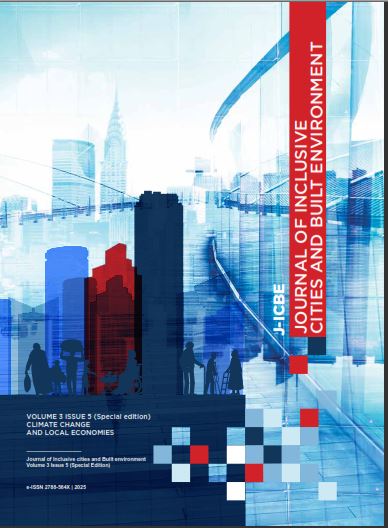Sustainable Alternatives: The Role of Natural Sponge Fibre in Enhancing Concrete Properties and limiting the impacts associated with climate change
Keywords:
Sustainable material, Natural sponge fibre, Ecologically friendly, StrengthAbstract
The use of polymer and steel fibres to alleviate the brittleness of mass concrete has been extensively researched. However, increased awareness of the environmental hazards associated with the gases emitted into the atmosphere such as carbon dioxide during production has prompted efforts to reduce global temperatures to below 2°C. Natural sponge fibre (NSF)- reinforced concrete is being produced as an eco-friendly substitute for polymer and steel fibre-reinforced concrete. Thus, the study aims to assess the effects of untreated (NonC) and sodium hydroxide (N)-treated NSF on the microstructure, diffusion, and mechanical properties of NSF-reinforced concrete (NSFRC), as well as their environmental benefits. A mass concrete mixture was prepared as a control (CTRL) and compared with mixtures containing untreated and N-treated NSF at various fibre weight fractions of 0.00%, 0.75%, 1.00%, and 1.25%. Beams were cast for four-point bending tests. Prisms and core discs extracted from the tested beams were used to examine axial compressive strength and durability after exposure. Scanning electron microscopy (SEM) was employed to analysis the surface morphology of the NSF and the fractured concrete. Test results of N-treated NSFRC beams showed a more robust flexural load-carrying capacity, demonstrating strain hardening in the rising portion of the curves after the first crack and enhanced durability compared to all the specimens. As anticipated, the plain concrete specimens failed without warning signs at the cracking stage. The strong fibre bond resulted in minimal fibre inelastic buckling, minor matrix cracks, high energy absorption, and axial compressive strength. N-treated NSFRC prisms demonstrated these qualities, and the splitting of specimens as a mode of failure was reduced. Generally, the treatment efficacy and the fibre abridgement proved to be responsible for the results. Micrograph analysis confirms that sodium hydroxide-treated NSFRC has potential as a sustainable, eco-friendly, and cost-effective alternative to conventional fibre-reinforced concrete in construction.



